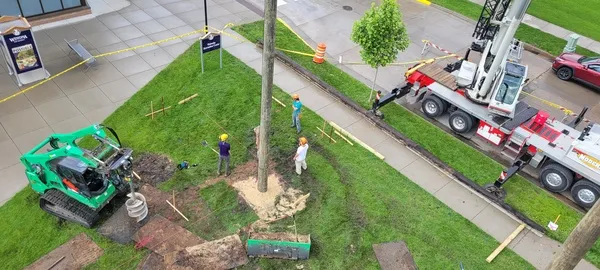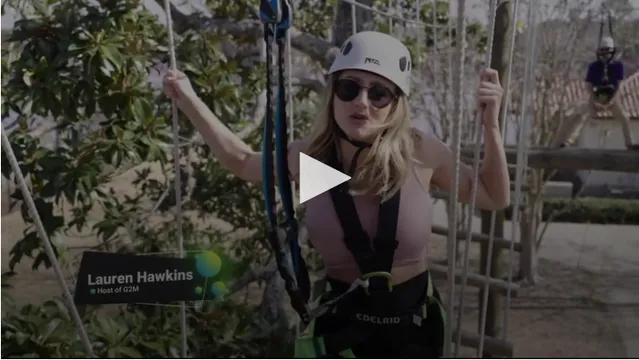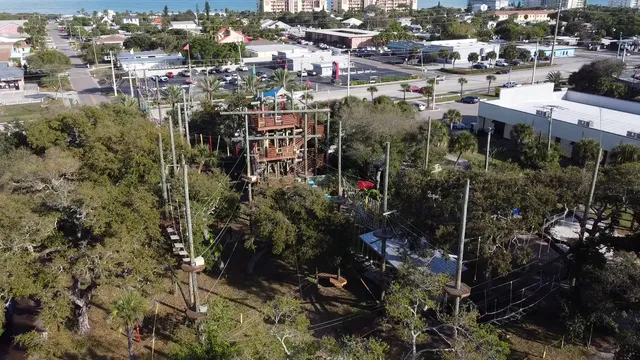What to Do for Your Challenge Course, Zip Line, or Aerial Adventure Park After a Major Storm Hits
When a major storm impacts the area, operators of challenge courses, zip lines, and adventure parks face unique challenges. Safety is paramount, and it's essential to conduct a thorough assessment to determine if the course can resume operations. Here's a step-by-step guide to ensuring your course is storm-ready before reopening, covering everything from initial assessments to repairs and communication.
1. Prioritize Safety and Assess the Area
The first priority is the safety of your team. Before entering the course area, be aware of downed power lines, fallen trees, and flooded paths. Assess the entire vicinity, and if conditions are hazardous, wait until they stabilize to avoid any unnecessary risks. A major weather event could be a server thunderstorm, hurricanes, tornadoes, floods, lightning, or major snowstorms. This information can also apply to other things like landslides, earthquakes, or forest/property fires.
2. Conduct a Full Structural Inspection
Courses rely heavily on the integrity of structures, so a thorough inspection is crucial. Start with all critical components:
- Anchor Points and Platforms: Check each anchor point for any signs of movement or weakening due to wind or water or earth movement. Platforms should be sturdy and free of debris.
- Cables and Ropes: Look for frayed or loose cables, which may have been damaged by flying debris. Ropes used in the course should be inspected for cuts, fraying, or undue stretching.
- Trees and Poles: If trees are used as anchor points, assess them for stability. Inspect trunks, branches, and roots for damage, and consider having a certified arborist evaluate tree health if you notice any structural changes.
3. Test Zip Line Equipment and Safety Gear
Zip lines need extra attention, especially after high winds or lightning. Even minor disruptions can cause slack or misalignment in cables. Test the zip lines with unweighted loads to gauge whether the lines run smoothly or if additional calibration is necessary. Once the equipment appears sound, conduct a test run using sandbags/weights to mimic rider weight before allowing staff or guests to use it.
Inspect the following safety equipment:
- Harnesses and Trolleys: Look for worn or damaged areas, rust, or any irregularities in harnesses, trolleys, and carabiners. Inspect all the other safety equipment as well.
- Backup Systems: Double-check that all backup systems are fully functional and ready to catch any unforeseen issues during a zip line ride.
4. Clear Debris and Restore Paths
After ensuring the course itself is safe, turn your attention to the paths, platforms, and landing zones. Remove any debris, fallen branches, or other hazards along pathways. Clear and secure platform areas to ensure unobstructed views and a safe approach for participants. Consider placing non-slip mats or traction pads on paths and platforms if the area is wet or muddy.
5. Communicate with Your Team and Customers
Once the physical work is complete, inform your team of any changes made, repairs done, or areas that may still need caution. Ensure all staff members understand the importance of conducting additional checks during the initial post-storm operations to monitor for hidden issues.
Be sure to document the inspection and any actions you took to correct findings.
Notify customers of the steps you have taken to ensure safety and explain any modifications or closures to particular sections of the course. Transparency can reinforce their confidence in your commitment to safety.
6. Schedule a Follow-Up Inspection
Even after passing initial checks, conditions can change, particularly if the storm was intense. Schedule a follow-up inspection with certified professionals or have your trained team conduct another check within a week or two of reopening. This is especially important for tree-based courses, as the stability of trees may shift even after the storm.
Final Thoughts
Resuming operations after a storm requires detailed inspections, repairs, and testing to ensure guest and staff safety. With a well-thought-out plan in place, your course can be back in action swiftly and securely, providing guests with an exhilarating yet safe adventure. Remember, proactive care now helps prevent accidents and maintains the integrity of your course, ensuring that guests can return with confidence and excitement.

Expert Challenge Course Rebuilds: Why Challenge Design is the Leader in Restoring Legacy Courses

WBRZ - GET 2 MOVING: Challenge Course at LSU UREC
